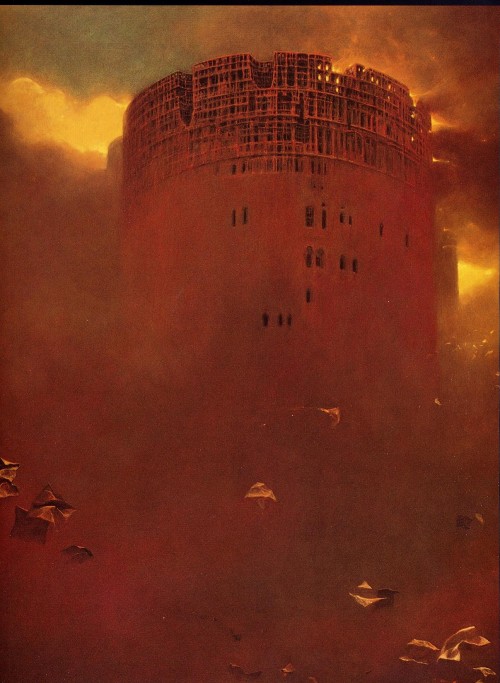
Zdzisław Beksiński, 1984
I am obsessed with the process of creation.
In my paintings I never use any “means”. I paint them completely naively, just as I would be taking photos of my own dreams.
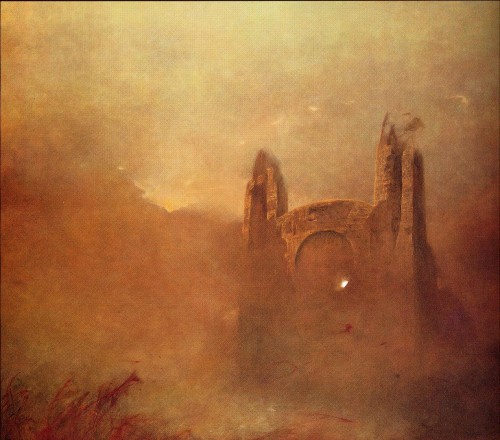
Zdzisław Beksiński, 1985
I consider creation as the only available way of fighting off the inevitability of passing away.
I have my own world, which if I paint it, can be a nightmare in your eyes. What I paint is above all else, a spiritual self-portrait of me.
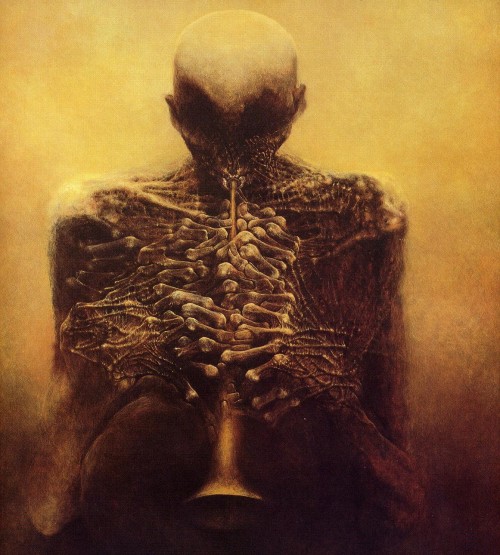
Zdzisław Beksiński, 1983
I quite simply have been trying from the very beginning to paint beautiful paintings. Beautiful. Of course you may take that for coquetry, and yet, it is the essential thing, the only thing that matters.
I never pick up ideas from outside sources such as literature or cinema. If I have, I’ve quite forgotten. I’m primarily inspired by music.
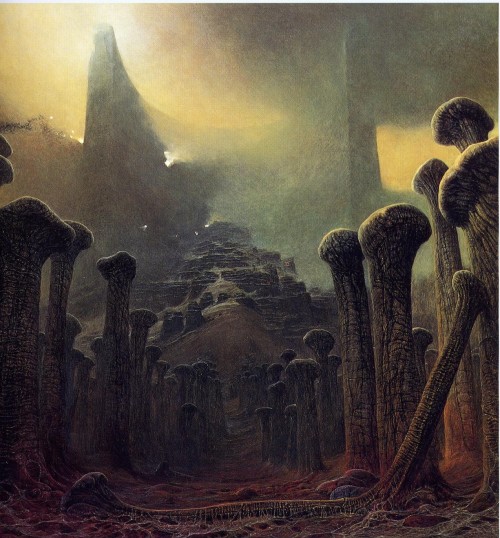
Zdzisław Beksiński, 1981
The beauty of the painting rests upon something inside of us that resonate or not with the painted thing. Additionally, the beauty of a painting should not be confused with the beauty of the subject.
Meaning is meaningless to me. I do not care for symbolism and I paint what I paint without meditating on a story.
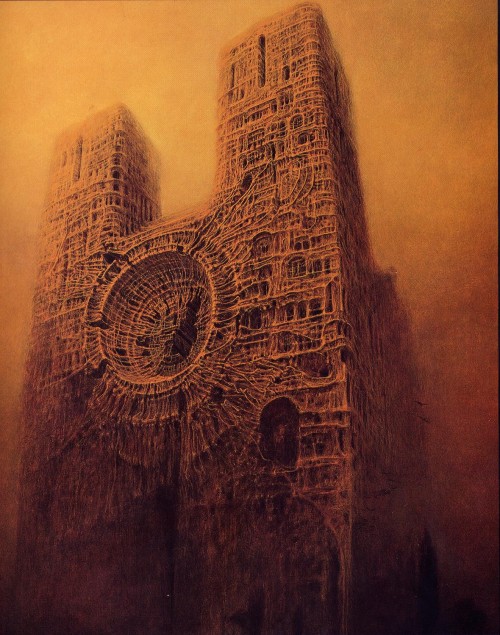
Zdzisław Beksiński, 1983
I cannot conceive of a sensible statement on painting.
Art is one of the beautiful lies and I guess it is nothing more.
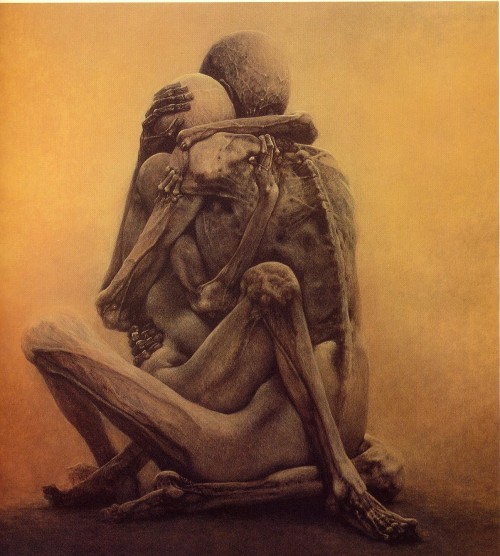
Zdzisław Beksiński, 1984
Painting closes me in an ordered area of obvious matters, and the consciousness that what I do is perfectly meaningless.
In essence, the word “art” and the complex of meaning habitually connected with it, too, is truly detestable for me. For me, what I do is simply just a form of existence.
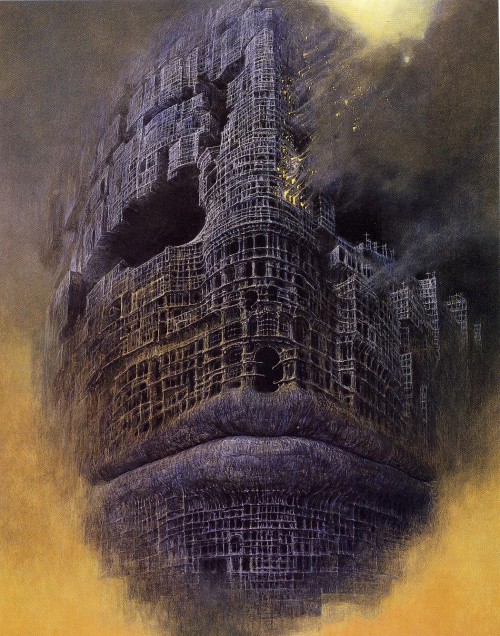
Zdzisław Beksiński, 1980
Presumably I was born, and shall be doing my best not to die, but I am sure I will not manage it.

Zdzisław Beksiński (24 February 1929 – 21 February 2005) was a Polish painter, photographer, and sculptor who is best known as a fantasy artist. Beksiński executed his paintings and drawings either in what he called a ‘Baroque’ or a ‘Gothic’ manner. The first style is dominated by representation, with the best-known examples coming from his ‘fantastic realism’ period when he painted disturbing images of a surrealistic, nightmarish environment. The second style is more abstract, being dominated by form, and is typified by Beksiński’s later paintings. Beksiński was murdered in 2005.
Beksiński had no formal training as an artist. His paintings were mainly created using oil paint on hardboard panels which he personally prepared, although he also experimented with acrylic paints. He abhorred silence, and always listened to classical music while painting.
Although Beksiński’s art was often grim, he himself was known to be a pleasant person who took enjoyment from conversation and had a keen sense of humor. He was exceptionally modest and somewhat shy, avoiding public events such as the openings of his own exhibitions. He credited music as his main source of inspiration. He claimed not to be much influenced by literature, cinema or the work of other artists, and almost never visited museums or exhibitions. Beksiński avoided concrete analyses of the content of his work, saying “I cannot conceive of a sensible statement on painting”. He was especially dismissive of those who sought or offered simple answers to what his work ‘meant’.
http://beksinski.dmochowskigallery.net/
http://www.beksinski.com.pl/
http://www.beksinski.pl/
Beksiński cites few potent influences upon his growth as a painter; Boecklin and Turner are two that are occasionally mentioned. The road Beksiński has travelled as an artist has been a rather solitary one, with little formal instruction. Certainly this was for the best. His visionary style is quite his own, and though there are resonances of technique with previous painters, Beksiński’s language is about as purely one man’s vision as any work of art can be.
There is an omnipresent aesthetic of elegance. That ability of beauty to overcome the often desperate nature of the subject matter, as a challenge few artists have ever met with such successful force. Beksiński’s paintings are haunting, weird, and sometimes disturbing. Yet, they are just as often beautiful. That rare trinity of mystery, wonder, and beauty, is what makes the fruit of this artist’s labour so very special.
In the medieval tradition Beksiński seems to believe art to be a forewarning about the fragility of the flesh – whatever pleasures we know are doomed to perish – thus his paintings manage to evoke at once the process of decay and the ongoing struggle for life. They hold within them a secret poetry, stained with blood and rust.
James Cowan











4 comments so far ↓
Nobody has commented yet. Be the first!
Comment